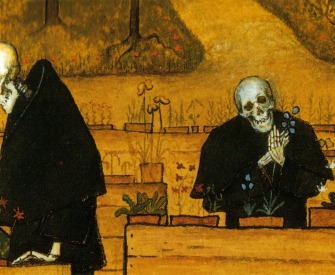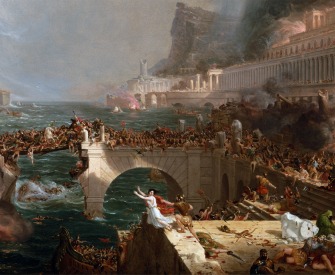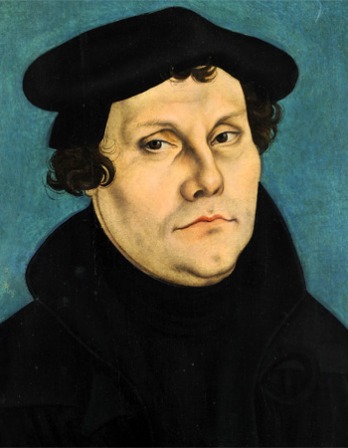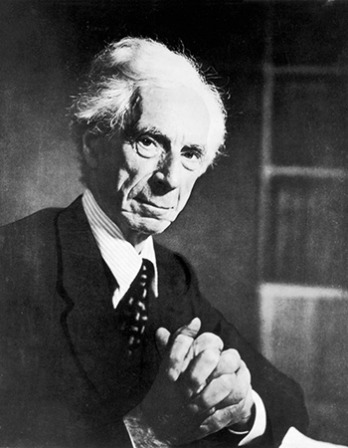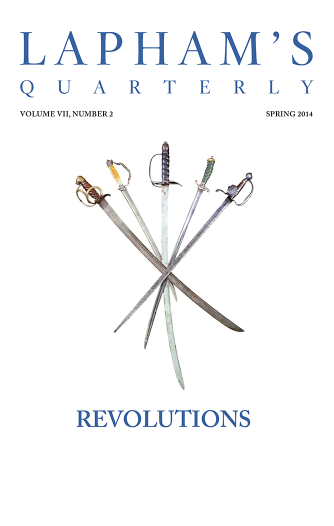O citizens, first acquire wealth; you can practice virtue afterward.
—Horace, 8 BCTrial by Fire
Hot gospelling preacher or savvy political operator? Reexamining the life and times of Girolamo Savonarola.
By Anthony Grafton

Savonarola Preaching Against Prodigality by Ludwig von Langenmantel, 1879. St. Bonaventure University, Allegany, New York.
Book Review: Savonarola: The Rise and Fall of a Renaissance Prophet by Donald Weinstein (Yale University Press)
On May 20, 1498, Girolamo Savonarola, the friar whose visions of tribulation and transformation had galvanized the citizens of Florence for almost a decade, faced torture for the second time in his life. For years, he had been telling the Florentines that the end of the world was near. An adroit combination of threats and promises had brought him political, as well as spiritual, authority. But now he stood exposed as a charlatan who had only pretended to receive instruction through visions sent by God. In April of that year, a government commission had already interrogated him. Attendants bound his hands behind his back with a rope that went over a pulley. Then they hoisted him into the air—a procedure that dislocated his arms and eventually broke one of them—and either dropped him to the floor or left him suspended just above it. Savonarola gave in, as most suspects did, and confessed in writing that he had only pretended to be a prophet whose revelations came from God. When the new set of inquisitors sent by Pope Alexander VI confronted him in May, he fell on his knees and insisted that his confession had been false: “I confess I have denied Christ. I lied.” But as soon as Savonarola was raised into the air again, he confirmed his confession. When the commissioners demanded to know why he had lied, he admitted, “I’m more susceptible than other people. Just looking at [the instruments of torture] is for me like getting ten turns of the rope.” Three days later he would die on the
Piazza della Signoria, where he was defrocked and hanged. His body was burned and the ashes thrown in the river Arno, to prevent his followers from collecting any relics. The story seems simple, and tragic: the fall of an ordinary man who pretended to be a divinely inspired prophet. Even at the time, some contemporaries found his case simple. Just before the end, Niccolò Machiavelli dismissed Savonarola as an opportunist who “keeps changing with the times.” Later he explained in chapter six of The Prince that the Dominican prophet was unarmed, and therefore he was doomed as soon as “the multitude believed in him no longer, and he had no means of keeping steadfast those who believed or of making the unbelievers to believe.”
Yet nothing is simple about Savonarola, as Donald Weinstein shows in his luminous and learned biography. Machiavelli’s close friend Francesco Guicciardini, who matched him in cynicism and perhaps more than matched him in political insight, praised Savonarola. A man of great learning, he had promoted “decent behavior” and reestablished the city’s republican government. Even if Savonarola had been a false prophet, after all, he had succeeded in fooling the public for many years: “He must have had great judgment, talent, and power of invention.” Where Guicciardini reserved his final verdict, others did not. Savonarola’s supporters secretly gathered his ashes from the river and revered them, along with his vestments, his hair shirt, and pieces of the gallows he had died on. His spiritual writings found hundreds of readers: his Manual for the Instruction of Confessors, unpublished when he died, was printed at least forty-two times over the next two centuries. Religious women in particular found inspiration in them for passionate, introspective prayer, and sometimes for visions like his. Almost a century after Savonarola died, a condemned heretic, Pope Clement VIII considered making him a saint.
Understanding Savonarola’s career, in other words, has never been easy. Yet it matters—and not only to specialists—here and now. American religious and political language has always had a rich apocalyptic vein, and one that has historically appealed as much to liberals as to conservatives. From the Puritans who hoped to create a city on a hill, free from sin, to the abolitionists who imagined themselves following an angry God armed with a “terrible swift sword”—and from the readers of the Left Behind series and the aficionados of RaptureReady.com to the prophets of economic and ecological disaster—Americans have never been slow to envision the future as a time of overwhelming, terrible change. In 1995 the Mormon Elder L. Tom Perry advised his fellow Latter-Day Saints, “Acquire and store a reserve of food and supplies that will sustain life…As long as I can remember, we have been taught to prepare for the future and to obtain a year’s supply of necessities. I would guess that the years of plenty have almost universally caused us to set aside this counsel. I believe the time to disregard this counsel is over. With events in the world today, it must be considered with all seriousness.”
His advice might find acceptance in some quarters quite distant from Salt Lake City: for example, among the readers of James Howard Kunstler, the independent social critic whose blog and books predict, on very different grounds, that “our oil-addicted, technology-dependent society is on the brink of collapse—that the long emergency has already begun.” Even our dollar bills remind us that a “novus ordo seclorum” began with the American Revolution. Yet many do not realize that America is not the first republic to draw inspiration from the language of apocalypse. What, if anything, can we learn from what happened, half a millennium ago, when the Florentines briefly saw themselves as citizens of a holy republic and looked forward to a new world?
In Florence itself, the meaning of Savonarola’s career has never been a settled issue. Some Florentines—especially members of the Medici family, whom he had helped to expel from Florence—cherished their hatred of his memory as much as the prophet’s followers, known for their gloom as Piagnoni (wailers), prized his relics. To this day, historians’ opinions are also radically divided. Some read the notarial records of his trial as the true confessions of a Tartuffe come to justice, others as fakes interpolated by the notaries who took them down (as Weinstein makes clear, the evidence supports both the general accuracy of the documents and the possibility that they were deliberately altered).
Savonarola began life in Ferrara in 1452. The grandson of a famous physician who wrote detailed accounts of the healing properties of springs and other medical matters, he gave up medical school, abandoned his family, and walked to Bologna, where he joined the Dominicans, the order of mendicant preachers who had devoted themselves since their foundation in the thirteenth century to fighting heresy and preaching to the poor of Europe’s cities. He liked the Dominican life, with its combination of austerity (Dominican novices served in the kitchen, cleaned, and learned to whip themselves) and learning (books were everywhere). Selected to study formal theology in Bologna—a testimony to his high intelligence—he eventually moved back to Ferrara, where he taught, and to Florence, where he served as master of novices in the convent of San Marco.
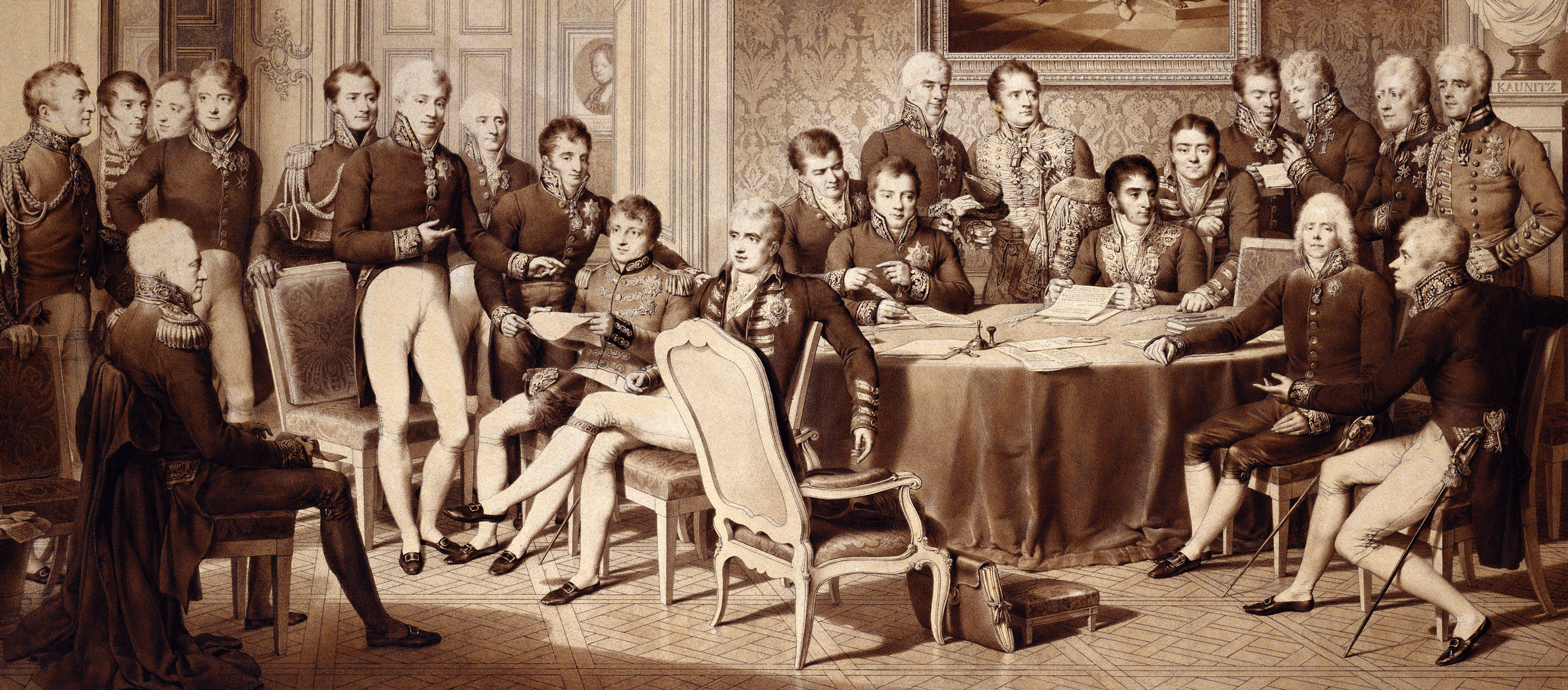
Congress of Vienna, by Jean-Baptiste Isabey, 1815.
More ascetic than the leaders of his order, with whom he came into conflict, Savonarola was excluded from the theological school at Bologna and moved from city to city. By the late 1480s, as he preached in Brescia, he found evidence in the Apocalypse that “a great scourge was coming to Italy” and called for repentance. In the early summer of 1490 he returned to Florence. There, this short man with the brilliant eyes and beaked nose began to attack the great powers of this world, princes and clerics alike, for seeking their own interest and failing to do God’s work. The friars of San Marco, some of them well-educated men of high families, elected him prior. He denounced by name a rich Florentine who was buying up the property of the poor to build an enormous palace. Listeners were terrified—and fascinated.
Savonarola’s return to Florence came, as Weinstein shows, at a critical moment. In the fourteenth and early fifteenth centuries, the city had been a republic, dominated for the most part by a small oligarchy. After 1433–34, however, a single family—the Medici—had taken control of the city’s political life. Cosimo de’ Medici, the architect of the takeover, insisted that nothing had changed. He maintained the traditional structure of short-term committees that governed the city—but selected those who were eligible for membership in them in advance. Cosimo’s son Piero and grandson Lorenzo maintained the fiction that they were ordinary citizens. In practice, they acted more and more as heads of state. Lorenzo dealt directly with other powers and their ambassadors and used his diplomatic skills to keep open war from breaking out among the Italian powers, which constantly skirmished with one another. As he rigged the public financial system to enrich his allies and sponsored more and more elaborate public displays of jousting and courtly conduct, Florence began to resemble Milan, another former republic ruled by just two families, the Visconti and the Sforza, who made no pretense of being merely “first citizens.”
In 1492, however, Lorenzo was dying. As in one of Shakespeare’s Roman plays, portents multiplied. Out of a cloudless sky, lightning struck and damaged the cathedral. In the church of Santa Maria Novella, a woman screamed when she saw a vision of a bull destroying a temple. Savonarola visited Lorenzo and blessed him before he died. But his sermons brought the Florentines no peace of mind. He told them of his own visions of a hand in the sky, which held a sword inscribed “The Sword of the Lord over the earth quickly and soon.” And he demanded that Florentines repent and build a just, Christian city.
In politics, what begins in fear usually ends in folly.
—Samuel Taylor Coleridge, 1830Meanwhile the political system that Lorenzo had deftly held in balance spun out of control. Lorenzo’s successor, Piero, lacked his father’s skills. The Florentines resented his distant behavior and arbitrary decisions. Italian states wooed the outside powers—the king of France, the Catholic kings of Spain, the Holy Roman Emperor—whom they had once despised as “barbarians.” Savonarola began to preach of a flood that would cover the land—just as the French king, Charles VIII, actually invaded Italy. Pico della Mirandola, the brilliant philosopher whom Lorenzo had brought to Florence, felt his hair stand on end when he heard Savonarola speak. Many decided that God must have inspired Savonarola’s symbolically precise predictions. When Piero failed to resist the French and Savonarola helped to negotiate their peaceful entry into the city, the Medici were expelled from Florence.
In a series of great sermons, which gradually took on a more and more political cast, Savonarola guided the Florentines to adopt reforms. Drawing on established traditions in Florentine political thought, he told the citizens that they were too intelligent and restless to live under anything but a republican government. By adapting the model of the Venetians—whose Great Council many Florentines had long admired—to Florentine conditions, they could create a godly republic. They did as he urged—and devised a new government that, though dominated by great families, allowed wider public participation than any earlier Florentine republic. Like Lorenzo before him, Savonarola now dominated the city without occupying an official position—or, indeed, being a citizen. Preaching in the cathedral and pouring out a stream of devotional and prophetic books, vividly illustrated, he did his best to guide the Florentines by sheer charisma.
The story of the next four years forms the core of Weinstein’s book. From the start, the city’s unity was precarious. Many resented Savonarola’s influence, and his supporters came to be seen as a party, dedicated less to pursuing holiness than to seizing power. The system of rotating offices ensured that Savonarola’s supporters did not always hold power, while plots to restore the Medici spread fear and resulted in terrible reprisals. Outbreaks of plague exacerbated the sudden terrors caused by political rumors. Meanwhile the prophet denounced the corruption of the Roman Church and fought to make Florence a new Jerusalem, a holy city. Enemies multiplied—especially when Pope Alexander VI, infuriated by Savonarola’s criticism, first summoned and eventually excommunicated him, and when Charles VIII, whom Savonarola had hailed as a new Charlemagne and a new Cyrus, made peace with the city’s Italian enemies.
Two features of Weinstein’s story are especially fascinating. Much of Florentine life, then as now, took place in the streets and squares. The city’s calendar was loaded with holidays, often marked by public processions. Savonarola’s imagination was caught by the spiritual potential of these splendid events, which lavishly displayed the wealth of the city and the skill of its artisans. In one of his most eloquent writings, The Triumph of the Cross, he portrayed the church itself as a great procession, in which a wounded Christ, crowned with thorns, rode on a cart with the Virgin, pulled by apostles and preachers and surrounded by patriarchs, prophets, martyrs, and thousands of male and female virgins carrying lilies. Themselves surrounded by the enemies of the church, the true Christians in this procession firmly made their way over a litter of shattered idols and burnt heretical books.
In real life, too, Savonarola sought ways to stage his vision of the church. He organized the city’s boys and girls into squads whose processions on Ash Wednesday and Palm Sunday in 1496 offered a model of ritual very different from the courtly jousts and parades with floats bearing ever-burning hearts that the Medici and their friends had organized. The Florentine Carnival procession—which, as Weinstein shows, helped to inspire Savonarola’s vision of the triumph of Jesus—featured four-wheeled carts bearing mythological and erotic images and was accompanied by Carnival songs. Lorenzo de’ Medici himself composed one of these. Savonarola and his young followers dramatized Carnival in 1497 and 1498 with bonfires of the vanities. In the 1420s and 1430s, Florence had created a new art and a new architecture. More recently, it had fostered the rich and erotic mythologies of Botticelli, and every year its artists and artisans took pride in producing stunning temporary structures and vehicles for the feast of St. John on June 24. Now musical instruments, sculptures by Donatello, and books by Petrarch, Dante, and Boccaccio were heaped up in a great pyramid and publicly burned. The procession that preceded the 1497 bonfire centered not on Bacchus or other pagan gods, but on a statue of the baby Jesus by Donatello, borne by four of Savonarola’s youths, while twelve others held a silk canopy over it. Participants collected alms and sang the praises, not of Venus or Bacchus, but of Mary, queen of Florence. In 1498, Savonarola’s boys and the friars of San Marco danced ecstatically in the street while he watched, “rapt and approving.”
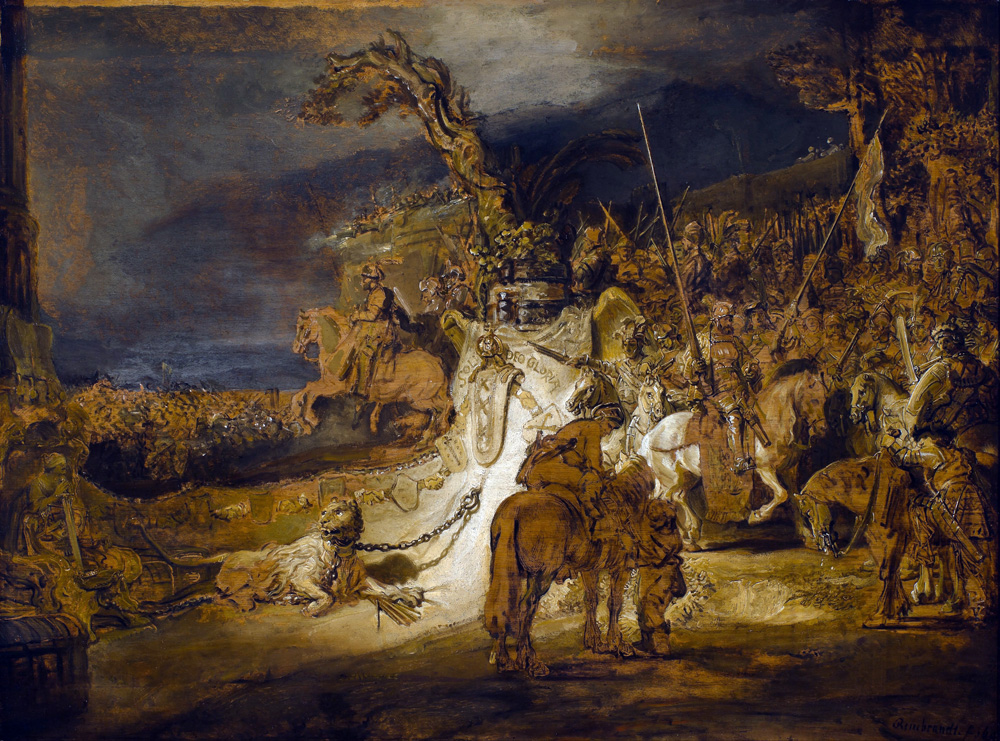
The Concord of the State, by Rembrandt van Rijn, 1637–1645. Museum Boijmans Van Beuningen, Rotterdam.
Not all of Savonarola’s efforts to control the public space of ritual worked as he hoped. His boys, who harassed women who dressed immodestly and men who appeared drunk in public or violated the Sabbath, angered Florentines who were only behaving as they always had. One of the signs that his control was slipping came in the middle of 1497, when the government restored the Palio, the wild horse-race through the city, which traditionally took place on St. John’s Day, June 24, and which had been forbidden at his urging. A reenactment of the visit of the Three Kings, performed in open defiance of the papal excommunication, shocked many citizens—and made a number of his followers so nervous that they stayed away. Weinstein illuminates every skirmish in Savonarola’s war of symbols.
He sheds an equally brilliant light on the development of Savonarola’s ideas and practices. When opposition stiffened, the categories with which the prophet divided the world into friends and enemies became sharper and sharper. As the split between pope and prophet became open and as the opponents of the Piagnoni gained control of the government, Savonarola used biblical language to lash his enemies. Though he had recommended a form of government in which aristocrats held much of the power—and some of them supported him to the end—his message and his practices became more and more radical with time. He had long railed against the tiepidi, the “worse”—the lukewarm Christians who did not join in making Florence the city of Christ. Now he imagined himself as Moses, his opponents as Egyptians, and awaited the sign from God that would confirm his righteousness. As to the pope, the prophet and his friends denounced him as an unbeliever who had bought his office, led a vicious life, and was really an atheist. Savonarola drafted letters to the Holy Roman Emperor and the rulers of Europe’s kingdoms, urging that only a general council could save the Church. In local politics, too, he showed an increasing harshness. During the summer of 1497 five men confessed, after being tortured, that they had been in contact with the exiled Medici. The government condemned them for conspiracy and ordered their beheading. They claimed their right of appeal to the Great Council. Savonarola, who had insisted on this right when the constitution was reformed, stood by as the government denied it in this case. Though he urged that one of the five be spared, he worded his plea “coldly,” knowing that it would be ignored. Weinstein compellingly treats this as “not only a serious mistake of judgment” but “a moral lapse.”
At the same time, though, Weinstein makes clear that Savonarola never lost his belief that the souls of individuals mattered and that in some cases mercy could do more than severity to save them. When a friend’s wife wrote to him for advice during a personal crisis, he warned her, “Let your conscience not be too scrupulous…Our Lord is liberal and kind and doesn’t pay attention to every minute detail. Charity extinguishes all sins.” Savonarola’s name has often been synonymous with a bleak hatred of all pleasures. H.L. Mencken, for example, wrote of America’s “huge force of lesser specialists in ecclesiastical mountebankery—tinhorn Loyolas, Savonarolas, and Xaviers of a hundred fantastic rites, each performing untiringly and each full of a grotesque and illimitable whimsicality.”
Savonarola burned books and works of art and rejected the pursuit of classical learning. The scholar and philosopher Marsilio Ficino, who translated the works of Plato into Latin and developed his own highly influential version of Plato’s philosophy, watched Savonarola’s career with growing horror. Writing to the College of Cardinals after the execution, he told them that Savonarola had been a clever demon who served “malicious astral forces—Antichrist himself” and only pretended to love and practice virtue. Yet Weinstein shows that he was no demon, but a man, capable of deep human insight and generous conduct—even though he also thinks Ficino was right to think that the friar had deceived not only his hearers but also himself into believing that he was a prophet. One of the great virtues of this book is its respect for the human capacity to feel and act in contradictory ways.
Hoping to avoid a final confrontation, Savonarola retired from the cathedral to San Marco. But when the pope threatened Florence with an interdict—and Florentine merchants in Rome with the confiscation of their goods—the citizens’ loyalty to their prophet was tested to destruction. After all, as the lawyer Guidantonio Vespucci, an enemy of the friar, explained at a meeting of influential citizens, “We Italians are what we are.” The Florentines could not afford to defend God’s honor at all costs—especially since they could not be sure that the prophet’s messages really came from God. After bitter debates, the government silenced Savonarola.
Argument still raged—the Florentines were as restless and irritable as the prophet said—until a Franciscan, Francesco di Puglia, offered to settle the matter with a trial by ordeal. He and a champion of Savonarola would walk through fire together. If one of them survived, God’s judgment would be clear. One of Savonarola’s chief allies, Domenico da Pescia, accepted the challenge. On the day, the friars of San Marco came in solemn procession to the Piazza della Signoria, where the trial was to take place. Bickering broke out. Domenico wanted to carry a crucifix, or the Host, into the flames. The Franciscans not only objected to this as sacrilege but also insisted that he be strip-searched for magic charms. As the spectators waited and the friars chanted and argued, the heavens opened. Hail, lightning, and heavy rain ended the trial. Savonarola’s supporters claimed a miracle, but his opponents accused him of practicing magic. When he retreated to San Marco, a mob surrounded the convent and murdered one of his chief supporters, Francesco Valori. Finally the government acted. Savonarola and his supporters were arrested. Interrogation, torture, and death would follow.
I shall be an autocrat: that’s my trade. And the good Lord will forgive me: that’s his.
—Catherine the Great, 1796Weinstein has dedicated much of his career to Savonarola. In a dazzling earlier book, he proved that Savonarola did not simply impose a grim new way of life on the Florentines. Rather, he drew on the Florentine tradition of republican politics—as well as on local traditions of religious prophecy that favored an alliance with France. In this book, too, he shows that Savonarola consistently found ways to revive traditional Florentine institutions—there had been bands of boys and bonfires of the vanities long before his time—and charge them with a new, eschatological drama and meaning. Most important of all, by deft and deeply informed reading of the sources, in all their contradictions, Weinstein makes clear that Savonarola was no simple pretender.
Savonarola admitted that he had not had visions—but he never admitted, and never accepted, that his understanding of the present and future had been false. He also fought—sometimes against his own followers—to convince the Florentines to live at peace with one another, even when that meant sparing his enemies. In his books on confession and meditative prayer, he laid out forms of religious counsel and experience that would become central to the renewal of the Catholic Church in the sixteenth and seventeenth centuries. After reading this exemplary work of historical analysis, it’s easy to understand why so many of Savonarola’s followers retained their faith in him even though he failed to stand up to torture or to save himself by a miracle. Some of them showed the paradoxical tenacity that can be characteristic of followers of millennial cults “when prophecy fails”—to quote the title of a classic study. But others found in the Dominican a spiritual father as well as a radical prophet. Weinstein’s subtle, cogent interpretation of the man, and of the way in which his message, and his own sense of self, responded to and changed with circumstances, is immensely compelling.
A half century ago, Norman Cohn argued in a famous book, The Pursuit of the Millennium, that millennial revolutionaries like Savonarola found their followers in the rootless proletariat of cities, and identified them as the ancestors of the leaders who, from 1917 on, led “the most disoriented and desperate of the poor” to rise up, inspired by “fantasies of a final, exterminatory struggle against ‘the great ones’; and of a perfect world from which self-seeking would be forever banished.” Weinstein argued then—and confirms now—that Savonarola actually found support at high levels of Florentine society. Millennial messages can appeal to the wealthy and well-educated—especially when they are cast as appeals to tradition, and when they show that the members of an elite, and the form of government they adopt, enjoy divine approval. At this time in the history of our republic, the story of Savonarola offers food for thought, and worry—less because the literal preachers of the millennium will swoop down and change our dysfunctional democracy into a millennial theocracy than because so many seem resolved, for political or religious or economic grounds, on a radical transformation of society, and condemn all who disagree as tiepidi. In America now, as in Florence then, the fruit of millennial politics is a mephitic mixture of radical legislation and deliberative stalemate. Savonarola’s modern counterparts, and those of his well-born supporters, show little of the humanity, the understanding of sin and weakness, that was as characteristic of him as his desire to build a perfect city.
